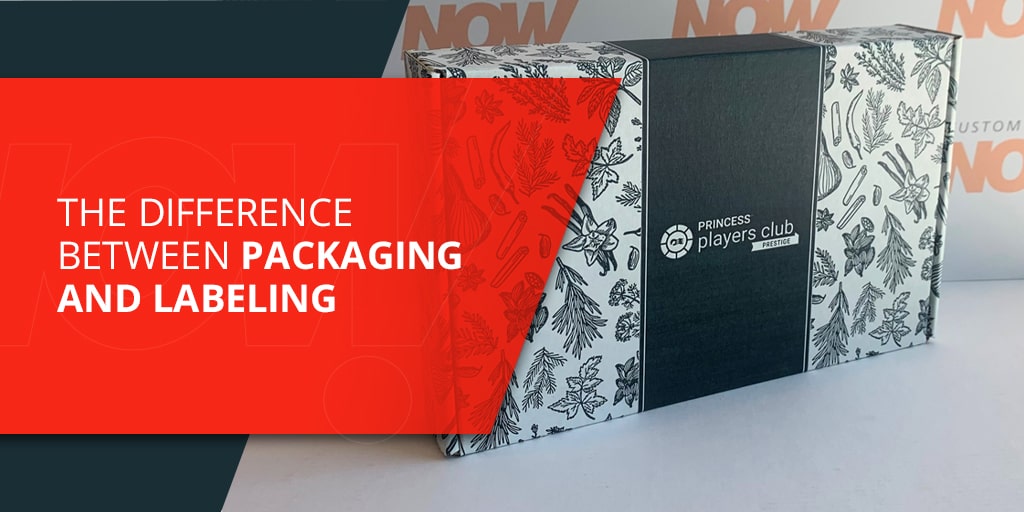
As you work on getting your products ready for customers, you probably have questions about packaging, labeling and related terms. Although they share some key similarities, it’s important to understand packaging vs. labeling when you’re designing and manufacturing your products. Keep reading to learn all about how packaging is used to contain products.
Packaging involves the combined process of designing a package and manufacturing the product containers. The packaging is used for protecting a product so it can be securely transported. Packaging can also promote a brand and help store staff identify the products.
Materials commonly used for packaging include:
Packaging comes in three different types. The main kinds of packaging are:
A package is also called a product wrapper, box or container. Examples of primary product packaging include:

Using product packaging has several benefits, including:
Labeling is the process of attaching an aesthetic wrapper or seal over a product. A label’s purpose is to attract customers to the product and display information.
A label displays:
The label on a product package has information relevant to suppliers, retailers and customers. They are important for keeping products organized and following any regulations regarding materials that can be legally sold at certain standards of quality. A label is usually applied to the front of the product packaging with a sticker, but there are different types of product labels to indicate specific information.
A label can be classified as a:
Packaging involves a different process from labeling, but both are required to sell products in stores and get products to customers. The primary function of packaging is to ensure the product is safe to transport, store and sell, but labeling provides necessary information about the product using printed text, logos, artwork or other designs.
Since packaging and labeling are both essential, it can be easy to confuse the two or assume that any manufacturer can do both. The main differences between packaging and labeling in marketing your products are:
Primary packaging intends to make a product look appealing to consumers with attractive colors and images, and all forms of packaging are designed to offer some protection. Labeling primarily intends to educate and inform consumers about the contents.
Both packaging and labeling share the objective of selling a product. Although labeling just provides a brief description, it is also intended to be a selling feature. You can use a clever product description in your labeling to convince consumers to buy your product.
For labels, designs are typically simple so that the text stands out. The description and other details must clearly communicate a sales message to consumers, which is why the label must be easy to read.
Packaging can have more complex designs that capitalize on the overall visual presentation of the product. Packaging is an important marketing tool and can become a major part of your brand image that customers will remember you by. You want your packaging to be as creative and visually attractive as possible.
The functional aspect of labeling is to communicate with customers, informing them about the product’s features and essential information before they make a purchasing decision. This information might include the nutrition contents of food items or the drug composition of a medication.
Packaging functions to protect the product and add visual appeal. Packaging primarily exists as a marketing tool that can also seal the product from moisture and keep it safe from damage.
Labeling is important for meeting government standards. The specific legal requirements for product labeling will vary depending on the country where the products are produced and sold. For food products in the United States, the ingredients, calories per serving and basic nutritional information must be listed accurately for the consumer’s health and safety.
Product packaging design must also conform to certain requirements, especially for perishable food products. Some countries will also regulate the impact that a product is allowed to have on the environment, making sustainable materials appealing for many companies and a must for others.
If you’re looking for sustainable product packaging, we have a variety of sleek, durable styles. At Custom Boxes Now, we work with your team to produce high-quality product packaging using your design choices. Contact us online to learn more about our process or to get a quote today.